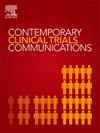Design and rationale for a global novel non-invasive screening observational study using genetics and non-invasive methodologies to identify at-risk MASLD participants: The ALIGN study
IF 1.4
Q4 MEDICINE, RESEARCH & EXPERIMENTAL
引用次数: 0
Abstract
Metabolic dysfunction-associated steatotic liver disease (MASLD) is a common chronic liver disease that is heterogenous in nature with various drivers and modifiers such as metabolic dysfunction and genetic factors. MASLD and the progressive subtype, metabolic dysfunction-associated steatohepatitis (MASH) represent the most rapidly increasing cause of liver-related mortality. There are limited treatment options for patients living with MASLD and MASH, various treatments with an array of different targets are under investigation and one therapeutic has been approved since the initiation of this study. Clinical trials investigating treatments for MASLD and MASH are associated with a high screen failure rate, driven largely by the regulatory required histological inclusion criteria for clinical trial eligibility. Other available clinically utilized biomarkers, typically referred to as non-invasive tests (NITs), can assess both the presence of steatosis and the severity of liver fibrosis in patients with MASLD and MASH in the clinic but are not yet approved over histological changes as endpoints for pivotal trials. However, the use of NITs have been demonstrated to increase the likelihood of meeting clinical trial entry criteria. All-Liver Interventional Global Network (ALIGN) is the first described multi-centre global observational screening study aimed at identifying individuals with a high likelihood of MASLD/MASH interested in participating in therapeutic clinical trials using non-invasive methodologies and genetic testing. This study represents a valuable prototype for industry and academic groups looking to evaluate large populations for MASH eligibility and interest in clinical trial participation.
求助全文
约1分钟内获得全文
求助全文
来源期刊

Contemporary Clinical Trials Communications
Pharmacology, Toxicology and Pharmaceutics-Pharmacology
CiteScore
2.70
自引率
6.70%
发文量
146
审稿时长
20 weeks
期刊介绍:
Contemporary Clinical Trials Communications is an international peer reviewed open access journal that publishes articles pertaining to all aspects of clinical trials, including, but not limited to, design, conduct, analysis, regulation and ethics. Manuscripts submitted should appeal to a readership drawn from a wide range of disciplines including medicine, life science, pharmaceutical science, biostatistics, epidemiology, computer science, management science, behavioral science, and bioethics. Contemporary Clinical Trials Communications is unique in that it is outside the confines of disease specifications, and it strives to increase the transparency of medical research and reduce publication bias by publishing scientifically valid original research findings irrespective of their perceived importance, significance or impact. Both randomized and non-randomized trials are within the scope of the Journal. Some common topics include trial design rationale and methods, operational methodologies and challenges, and positive and negative trial results. In addition to original research, the Journal also welcomes other types of communications including, but are not limited to, methodology reviews, perspectives and discussions. Through timely dissemination of advances in clinical trials, the goal of Contemporary Clinical Trials Communications is to serve as a platform to enhance the communication and collaboration within the global clinical trials community that ultimately advances this field of research for the benefit of patients.
 求助内容:
求助内容: 应助结果提醒方式:
应助结果提醒方式:


